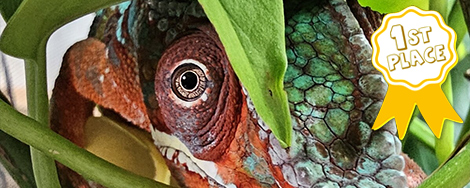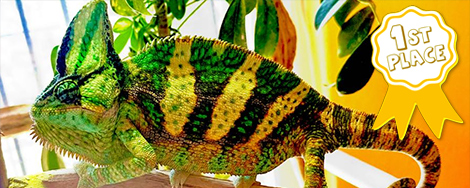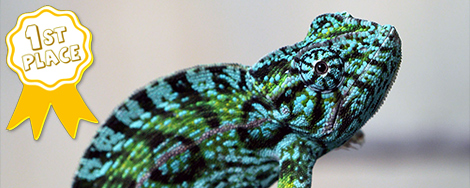Navigation
Install the app
How to install the app on iOS
Follow along with the video below to see how to install our site as a web app on your home screen.
Note: This feature may not be available in some browsers.
More options
Home Page
Recent Discussions
- Replies
- 10
- Views
- 282
- Replies
- 20
- Views
- 1K
Did You Know?
Chameleons do have taste buds on their tongue but overall they have a poor sense of taste.
The largest chameleon species by weight is Calumma parsonii (Parson’s Chameleon).
Chameleons change color by rearranging a lattice of nanocrystals in one of their top layers of skin cells called iridophores. Chameleons can then stretch this layer, broadening the nanocrystalline lattice, thereby causing it to reflect a different wavelength of light.
There are currently 202 recognized chameleon species and 85 of them are found on the island of Madagascar.
Chameleons can project their tongue up to 2.2 times their body length.
The word Chamaeleo is derived via Latin from the Greek word khamaileon. It roughly translates to ground lion. Khamai means on the ground and leon means lion.
The word Calumma comes from the Latin word for covering. This genus consists of chameleons from Madagascar with occipital lobes.
The word Furcifer is derived from the Latin word “furci” or forked.
Chameleons have acrodont teeth meaning they are an extension of the jawbone. They are not set in sockets nor are they replaced.
The process of shedding is called ecdysis.
We love our sponsors
- Chameleons Only
- Mist King
- Tortoise Supply
- Great Lakes Hornworm
- LLLReptile
- Mulberry Farms
- Chameleon Paradise
- Coastal Silkworms
- Dubia Roaches
- Dragon Strand
- Chamelicious Chameleons
- Full Throttle Feeders
- Gulf Coast Silkworms
- Chromatic Chameleons
- Sticky Tongue Farms
- The Critter Depot
- Mantis Place
- Rebecca Wang Art
- iPardalis
- Rainbow Mealworms
- FramsChams
- Light Your Reptiles
- Neptune the Chameleon
- Tamura Designs
- Ready's Rainforest
Featured Blog Entries
-
Basic info on Misting and fogging...
- Decadancin
- Views: 85K
- Reaction score: 10
- Comments: 24
- General
Of course, all animals require water to survive, and it isn't as simple as placing a bowl in the bottom and calling it a day. In fact, with most... -
How to Do your Own FECAL FLOAT - VIDEO
- Dez
- Views: 77K
- Reaction score: 11
- Comments: 11
- General
Intestinal Parasites are common in chameleons and other reptiles. Wild caught chameleons have a reputation of having intestinal... -
Free-range inspiration
- Sonny13
- 5 min read
- Views: 34K
- Reaction score: 24
- Comments: 24
- General
Some inspirational thoughts for free ranging First, our living room is a large, bright (views on both sides) and pet free living room without...





